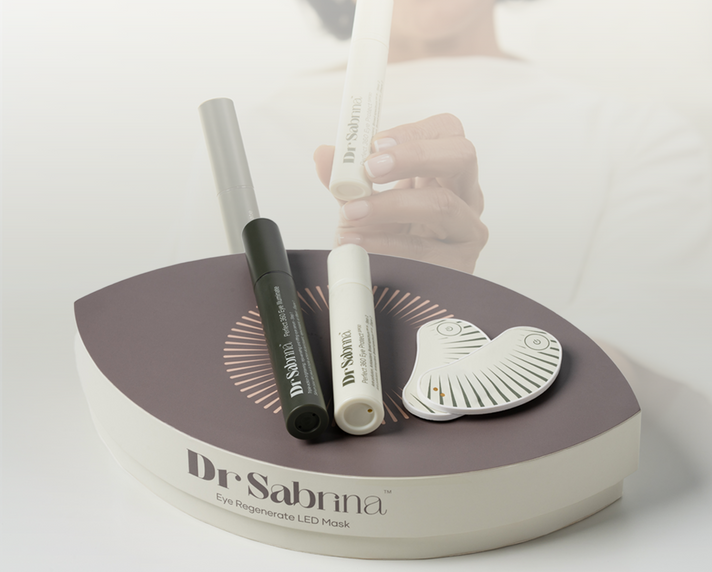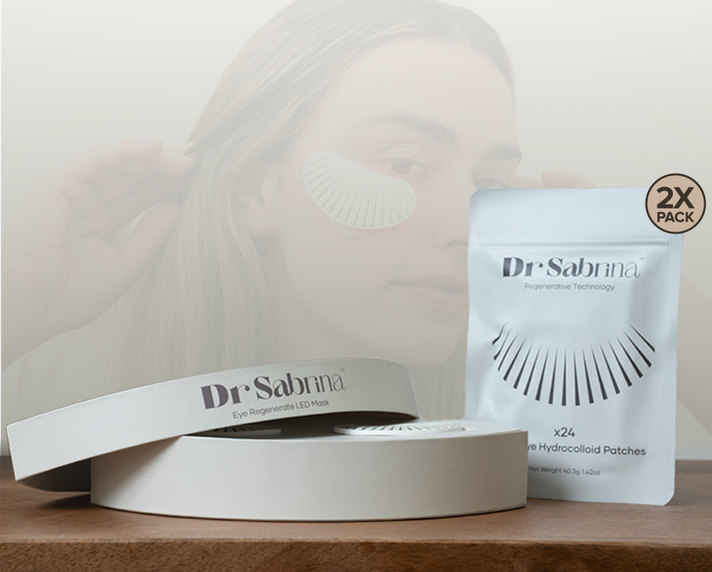Eye Serum
Types of Eye Infections: Symptoms, Causes, and Treatments

Have you ever woken up in a panic, wondering what had gone wrong the night before and waking up with red, itchy eyes? You're not alone. The World Health Organisation estimates that over 2.2 billion people globally experience some kind of visual impairment, with treatable or preventable eye diseases accounting for a sizable portion of this total.
Eye infections may quickly develop and disrupt your daily routine, ranging from minor irritations to serious medical emergencies. Understanding the various kinds of eye infections can help you take the appropriate precautions and respond quickly, regardless of whether you wear contacts, spend a lot of time in front of a computer, or just like to rub your eyes out of habit.
Let's explain it simply, without using a lot of medical jargon.
What Are Eye Infections?
An eye infection occurs when harmful microorganisms such as bacteria, viruses, or fungi invade any part of the eye- the eyelid, conjunctiva, cornea, or even the interior. These so-called agonists bring symptoms such as redness, pain, itching, discharge, and sometimes even blurry vision.
Eye infections may differ depending on the part of the eye affected and the causative organism. Some are contagious, some are not, but regardless, they all need to be treated with respect.
Most Common Types of Eye Infections (With Real-Life Examples)
- Conjunctivitis (Pink Eye)
- Keratitis
- Blepharitis
- Stye (Hordeolum)
- Uveitis
Let's try to understand the most common and clinically recognised eye infection types and how they appear in everyday life.
1. Conjunctivitis (Pink Eye)
This is probably the most common and contagious infection experienced by kids and their teachers. Conjunctivitis occurs when the clear membrane (conjunctiva) lying against the eyelid becomes inflamed. The leading causes are viruses, bacteria, allergens, and irritants.
If you are currently experiencing conjunctivitis, consider reading more about how to treat it.
2. Keratitis
This infection attacks the cornea and can become serious if not treated. Keratitis could be caused by bacteria, viruses (herpes simplex virus, for example), fungi, or even parasites. Contact lens wearers are prone to developing keratitis. Symptoms include severe eye pain, blurry vision, and photophobia.
3. Blepharitis
Have you ever seen some crusty buildup on your lids or lashes? That may be blepharitis, an inflammation of the eyelid margin usually caused by bacteria or skin diseases such as dandruff or rosacea. It is uncomfortable but not usually contagious.
4. Stye (Hordeolum)
Little bumps on the lid contrast with the oil gland blockage that causes styes. It's just a pimple on the eyelid. Although it doesn't inflict much harm, it's quite irritating to look at.
5. Uveitis
This inflammation affects the uvea, the middle layer of your eye. Uveitis can be caused by autoimmune diseases, infections, or injuries and is more serious because it can cause loss of vision when not treated.
Recognising the Signs Early
It's important to spot symptoms early. Depending on the types of eye infection, symptoms may include:
-
Redness and swelling
-
Itching or burning
-
Discharge (yellow, green, or clear)
-
Excessive tearing
-
Light sensitivity
-
Blurred vision
-
Gritty sensation
Always consult a medical professional for a proper diagnosis and avoid self-diagnosing based on internet images alone, although we know how tempting looking up pictures of eye infections can be when panicking at 2 AM!
Types of Eye Infections in Adults: Are You at Risk?
While children are often associated with pink eye outbreaks, types of eye infections in adults are increasingly common, especially among people with compromised immunity, contact lens users, or those exposed to environmental irritants.
Let’s not forget that those who spend hours glued to screens, dry eyes, and poor hygiene can make you vulnerable to several types of eye infections.
Understanding the Different Types of Eye Infections
|
Type of Infection |
Common Cause |
Contagious |
Symptoms |
|
Conjunctivitis |
Viral, bacterial, and allergens |
Yes |
Redness, itching, discharge |
|
Keratitis |
Bacteria, viruses, and fungi |
Sometimes |
Pain, blurred vision, redness |
|
Stye (Hordeolum) |
Blocked oil gland |
No |
Swelling, pain, tenderness |
|
Blepharitis |
Bacteria, skin conditions |
No |
Crusty eyelids, burning |
|
Uveitis |
Autoimmune, trauma |
No |
Eye pain, light sensitivity |
Whether looking at pink eye infection types or deeper issues like keratitis, timely treatment is key.
So, How to Get Rid of Pink Eyes?
If you're frantically Googling how to get rid of pink eyes at home, the best answer is to determine whether the infection is viral or bacterial. Bacterial infections may require antibiotic drops, while viral infections generally resolve independently with supportive care like cold compresses and artificial tears.
Prevention is Still the Best Medicine
No matter which of the types of eye infections you're worried about, prevention will always be your best bet:
-
Wash your hands before touching your eyes
-
Avoid sharing towels, pillows, or makeup.
-
Don’t sleep in contact lenses.
-
Protect your eyes in dusty or smoky environments.
-
Use the best under eye serum to keep the under-eye area hydrated and less prone to irritation.
Final Thoughts: Keep Your Eyes Wide Open
Eye infections are more common than we think. While some are minor irritants, others can threaten your vision if left unattended. Understanding the types of eye infections, being aware of symptoms, and seeking medical help when needed can save you from long-term issues.
Whether it's the everyday annoyance of a stye or the alarming pain of keratitis, don't brush off symptoms as just tired eyes.
So next time your eyes feel off, ask yourself if it could be one of the types of eye infections.
FAQs
1. What is the most common type of eye infection?
Conjunctivitis (also known as pink eye) is the most common and highly contagious eye infection, especially among children and teachers.
2. How do I know if my eye infection is viral or bacterial?
Viral infections often cause watery discharge and affect both eyes, while bacterial infections usually produce thick, yellow discharge in one eye. A doctor can confirm the exact cause.
3. Can eye infections go away on their own?
Some mild eye infections, especially viral ones, can clear up within a week, but others may need medical treatment.
4. Are eye infections contagious?
Yes, many eye infections, especially viral and bacterial conjunctivitis, are highly contagious and spread through direct contact.
5. Can allergies cause eye infections?
No, but allergies can mimic infection symptoms like redness, itching, and tearing. However, allergic reactions don’t produce pus or contagious discharge.


















